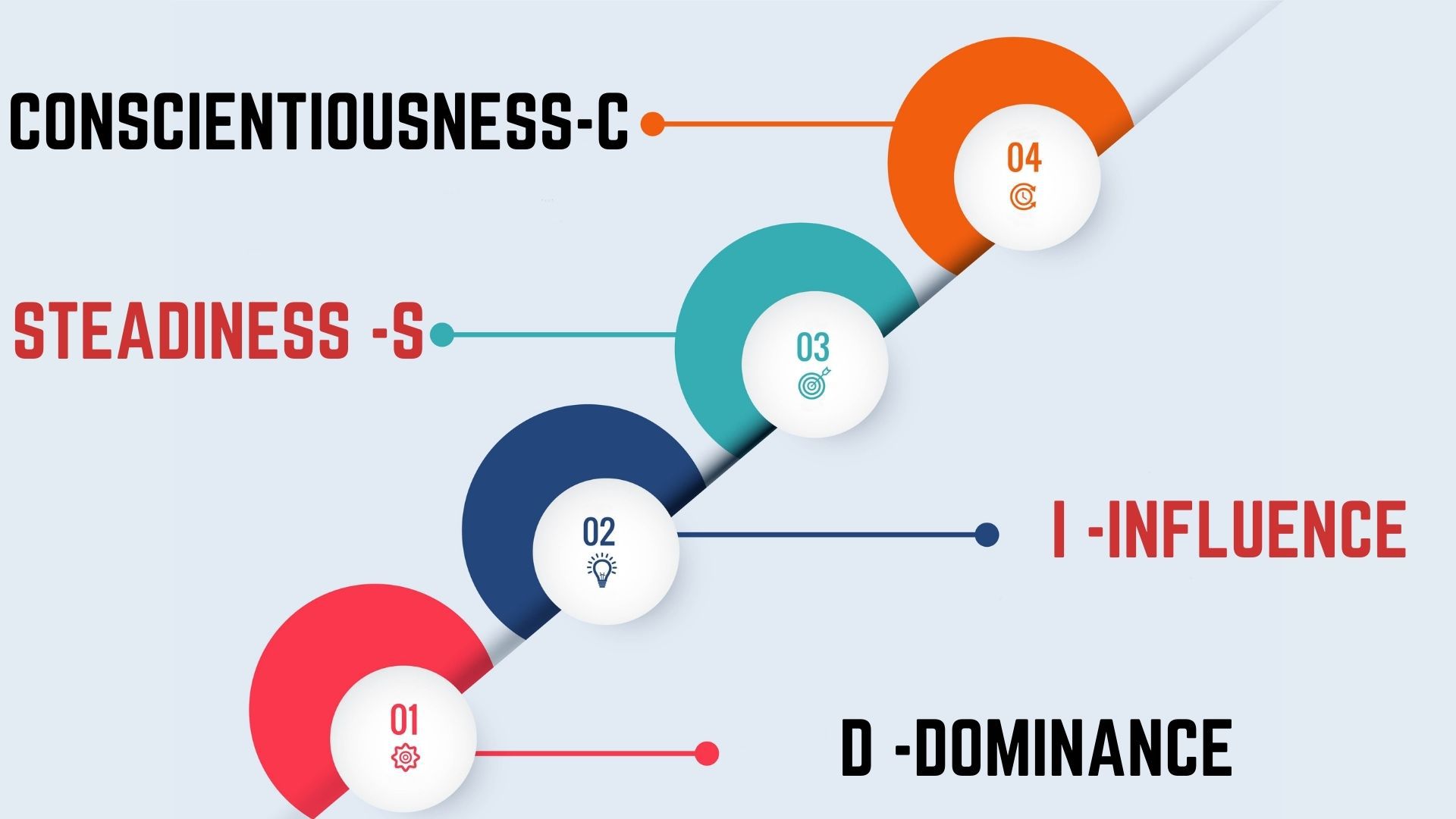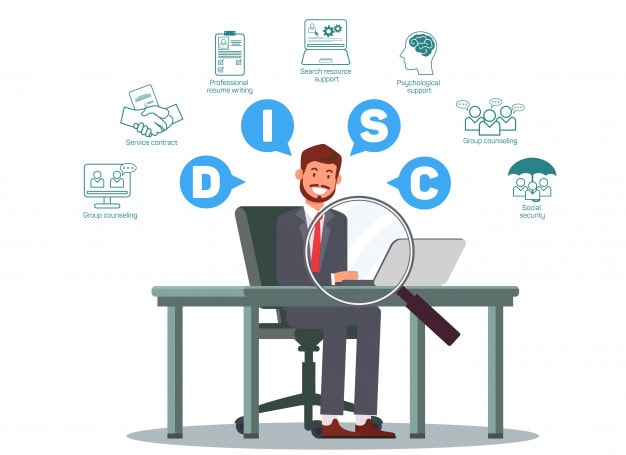The DiSC model is defined as a personal assessment tool that assists in improving communication, sales, leadership, teamwork, as well as productivity. It is of utmost importance as it can measure behavioural and personality style.
DiSC model is a theory by renowned psychologist William Moulton Marston that focuses on personality traits. It was later developed by an industrial psychologist, Walter Vernon Clarke, into a behavioural assessment tool.
There are various versions based on the outcome one desires. In the year 2007, Inscape Publishing launched everything DiSC, a product family. The enhanced assessment tool is valuable as it is a customized facilitation tool with personalized reports. It also provides electronic access to an unlimited number of follow-up reports.
Table of Contents
How does the DiSC model work?
The DiSC assessment tool is straightforward to use as it is electronically scored for individuals who want to take the assessment online. A self-scoring mechanism is offered for paper assessments.
In a DiSC profile test, the individual receives a simple questionnaire about his behaviour. The rating scale for Everything DiSC profiles includes options like I strongly agree, agree, I am neutral etc
In case the user is using DiSC Classic, the questionnaire includes – this word describes me most and this the least. This is because a person knows himself best and will be able to answer truthfully. Scoring can be done either electronically or by hand based on the chosen profile format and will produce a profile report.
The profile report will have information about behavioural style, strategy for effective behaviour, preferred environment, needs and tendencies. Information about other DiSC styles is included in the report. If you want to have a better understanding of colleague, clients, groups or a team, then you can use options like group, comparison or other reports.
The reference points of the DiSC model
There are four reference points of the DiSC model. These are explained below
1. Dominance
The letter D in DiSC model stands for Dominance, and here the individual puts his onus on overcoming difficulties and achieving results.
The main characteristics of a person with D style include
- He gives credence to personal freedom and competency
- He sees the bigger picture and gets straight to the point
- He is forceful, strong-willed and direct.
- He fears being taken advantage of or in other words any kind of vulnerability
- He shows open scepticism, and there is an inherent lack of concern for others
- He is often impatient
- There is an underlying confidence in him
- Competition and challenges motivate him to excel at his work and achieve the desired success
- He lives a fast-paced life that believes in immediate action and results
While interacting with a D style individual, it is important to be brief, avoid generalizations, stop being repetitive, be focused and put the onus on the solution instead of the problem.
2. Influence
The letter i in the DiSC model stands for influence, and here the individual puts his onus on persuading other people and influencing them.
The main characteristics of a person with i style include
- He believes in democratic relationships and freedom of expression
- Others describe him as a magnetic personality who is convincing and is optimistic by nature
- His warm personality inspires trust in others
- He puts his onus on counselling and coaching
- His priority is on collaboration and taking suitable and timely action
- He is enthusiastic
- Group activities and social recognition motivates him to do better
- Relationships matter significantly to him
- He is afraid of being ignored and disapproved of
- He fears the loss of influence
- He is disorganized and is also impulsive by nature
While interacting with an i style individuals, it is essential to share experiences and give them time to talk. Do not interrupt them or burden them with details. It is better to focus on positives rather than negatives.
3. Steadiness
The letter S in DiSC model stands for steadiness, and here the individual puts his onus on dependability and sincerity.
The main characteristics of a person with S style include
- He is dependable
- He does not like to be rushed into things
- He has a composed and patient demeanour whose approach is also calm and collected
- He is ready to cooperate and collaborate with others to continue his task
- Sincere appreciation is a motivational factor for him
- He believes in maintaining stability, and this is why a controlled environment and maintaining the status quo are essential for him
- He is of supportive nature
- He is consistent, deliberate and predictable
- He puts his onus on helping others
- He believes in loyalty above everything else
- He fears change
- He is too accommodating
- He tries not to offend anyone and becomes indecisive after a point
- He seeks group acceptance
While interacting with S style individual, it is essential to be polite, be cordial and express an interest in them. This type of individuals avoids confrontational and aggressive behaviour.
4. Conscientiousness
The letter C in DiSC model stand for Conscientiousness and here the individual puts his onus on expertise, quality and accuracy.
The main characteristics of a person with C style include
- He is diplomatic and cautious
- He enjoys independence
- He believes in maintaining stability and ensuring accuracy
- He will challenge assumptions
- Opportunities for gaining and improving knowledge is an important motivational factor for him
- He loves to show his expertise through quality work
- He encourages objective reasoning
- He believes in being tactful, systematic and careful
- He is too critical and most often is accused of overanalyzing things
- He fears of being on the wrong side
- He does not take kindly to criticism
While interacting with C style individual, it is essential to be persistent and focus on details and facts.
Advantages of the DiSC model
The advantages of the DiSC model includes
- The DiSC assessment tool is widely used during recruitment because of its inexpensive nature and simplicity. It assists in implementing a personality profiling that is practical and affordable.
- The tool has an important feature called job matching that points towards those applicants that match the requirement of the given role.
- It also provides feedback to the candidates on their performances; this proves a boon as the organization can now understand the personal style of the applicant and assist him in making a smooth transition inside the firm
- One of the benefits of using DiSC is that it can identify both problem areas and positives of any working relationship.
- It can create a constructive relationship in any setting
- The DiSC assessment tool is used in developing a communication strategy that suits every individual personality.
- DiSC assessment tool helps in the assessment and managing process of a recruit in an organization. It provides regular profiling about his performance and also strategies that will keep him motivated in his role.
- The relationship assessment feature in the DiSC model assist in conflict resolution and defusing tense situations
- DiSC model has tools to report and interpret personality dynamics in the organization
- It can easily describe the type of leadership needed within a group and assess whether a person has the required leadership qualities
- DiSC model is widely used in addressing internal issues
Disadvantages of the DiSC model
The disadvantages of the DiSC model includes
- Human behaviour is complex, and it is difficult to dictate that a specific response will be accurate at every time. The answers depend on the circumstances and mindset of the person answering at that time only
- The test is in a multiple-choice format where the options are already given, and you have to choose the option that is nearest to your response. It sometimes feels very limiting to the person answering the questionnaire
- The DiSC model is available in several variations, and all of them have not been vetted. It can result in inaccurate results
- The result can be manipulated to suit a specific purpose. For instance, if a candidate is testing for a job profile, he will choose most of the qualities that will show him in a positive light. How can the organization be sure that his answers are correct and not fabricated
Conclusion
The DiSC model helps to give an accurate description of human behaviour in different situations. Although it is not capable of measuring values, mental health, aptitude and intelligence it can measure how a person reacts to challenges, procedures and rules, his preferred pace and how he influences other human beings.
The powerful tool helps individuals to understand themselves and make adjustments so that they can adapt their behaviour with other human beings. It can be about personal relationships or professional ones related to a leadership position in a workplace or within a work team.
Liked this post? Check out the complete series on Careers


Güzel bir site